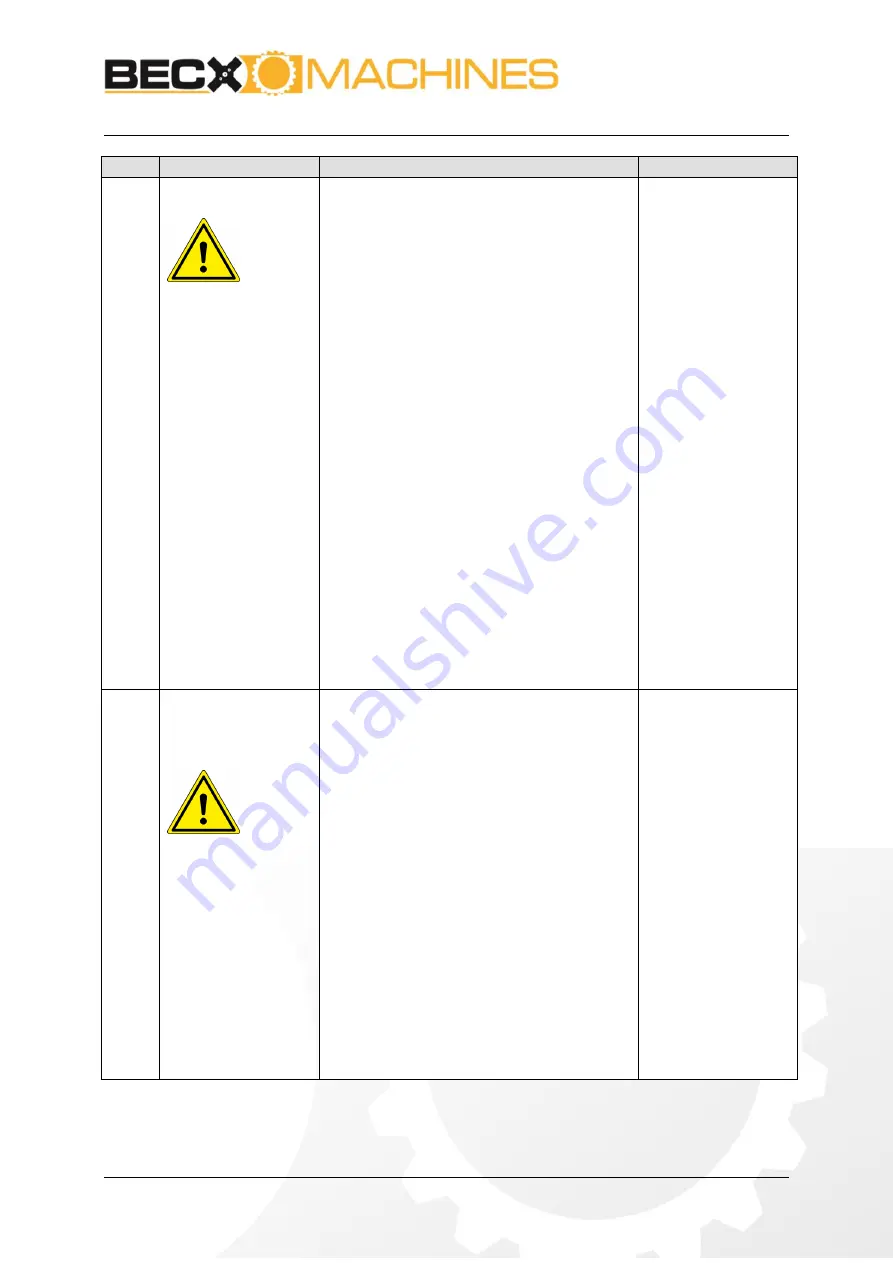
Hedge trimmer
Type: HS130HR
Version: 05
December. 2019
Page 20 of 34
No.
What to do
Action
Result
1
Check the machinery
•
check the following points:
•
check the cutter blades:
•
The cutter blades must not be ground
back too far and must be in balance
(see 5.1)
•
Check the cutter blades for damage
and cracks before starting, after 4
hours of operation or immediately if
the cutter blades have come into
contact with materials that are
different from what they are intended
to cut.
•
Visually check at least on a daily basis
whether the locking plates and locking
nuts of the cutter blades are in place.
•
Check whether the direction of rotation
corresponds to the arrow on the deck.
•
Check the number of revolutions of the
cutter blades.
•
Check whether the cutter blades run
free of vibrations.
•
If a defect is identified in one of the above
points, this must first be remedied before it
is allowed to put the hedge trimmer back
into operation.
Carrying on with
loose locking nuts,
cracked cutter blades
or with a poorly
running or
excessively fast
system can result in
damage to the
machinery and/or
injury to the operator
or passers-by.
2
Check the site where
the work will take
place.
•
Check the hedge to be trimmed and the
surroundings for the following points:
•
Are there any obstacles which can be
damaged by the hedge trimmer or which
could cause damage to the hedge
trimmer?
•
Are there any loose items such as dirt or
loose metal wires?
•
Check if there is people or animals in the
danger zone are
•
If there are lots of people passing by the
work-place should be secured.
•
If the sight of the operator is severly
hindered (for instance by high or dense
hedge) the work-place should be
secured.
•
Operator needs to always be sure there
are no people on the other side of a high
dense hedge when cutting it.
Bear this in mind
when carrying out the
trimming operation.
Remove any loose
items in order to
prevent damage to
the hedge trimmer.














































